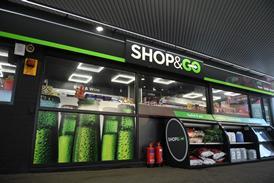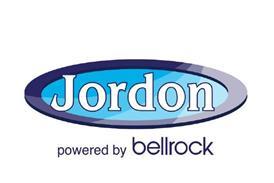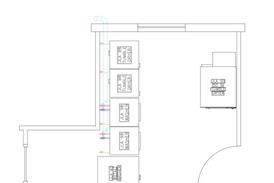BP and Total were both named and shamed as two of the most persistent polluters in 2002. All for letting fuel leak from underground tanks and pipework.
BP faced fines of £60,000 in October for allowing the equivalent of a road tanker of fuel to escape a 30-year-old tank before the leak was located at its forecourt in Luton, Bedfordshire. That was the major’s fifth prosecuted offence.
Meanwhile, Total was fined £54,000 for allowing petrol from its service station in Tadley, Hampshire, to pollute groundwater and a tributary following leaks from an underground tank and filler and suction lines.
While those figures may be a drop in the ocean for the likes of BP and Total, for an independent it could spell disaster. Even if the clean-up bills and fines aren’t hefty enough to put you out of business, being shamed as a polluter is not going to do your reputation any good, especially in the eyes of the environmentally conscious customer.
So if a leak has been identified, it’s time to cough up and remedy the problem. Leaks in pipes are more common and easier to deal with, but if the leak is in the tank, any remaining fuel has to be drained and the tank made safe again.
“The first thing to ascertain is where the leak is by using a specialist company such as Tanknology,” says Nigel Plumb, director of David Plumb & Co. “We seldom advise repairing a tank because we have found that one hole usually means that the tank has deteriorated to the point where other holes will start appearing in a very short time.”
When the old tank is out, and before installing the new one, Plumb recommends that the soil is tested to determine the level and extent of contamination. “If the contamination is not too extensive, it may be more cost effective to decontaminate at this point, rather than leave it to be dealt with in the future,” he says.
TANK LINING
The ideal scenario has to be to get your tanks in the best condition to avoid leaks before they happen. Tank replacement may not be a viable option for many sites – it’s expensive, time consuming, and often means the forecourt needs digging up. But there are alternatives, such as tank lining.
Court House Service Station in Bath, Somerset, had four tanks relined by Tanksafe in October last year, in an investment worth about £45,000. Owner Steve Tubbs, who runs the forecourt with wife Jill, says: “We decided to reline our tanks because we couldn’t afford to retank.”
The four tanks had been at the site for just over 30 years. They were directly underneath the forecourt so unless the site had a complete knock down and rebuild, tank lining was the only option. The site was closed for four weeks while a shop extension was being completed, and during that time Tanksafe relined the four tanks – two 9,000 litre and two 27,000 litre capacity – with a double layer.
“Tanksafe was superb. Before the redevelopment I thought any problems that occurred would be with the tanks but that part went very smoothly,” explains Steve. “We decided on a double-skin lining for extra piece of mind. We were getting them pressure tested every year but were losing sleep over them – we wanted to do the best job we could afford.”
The process involved emptying the sludge from the bottom of the tanks and degassing the tanks, which took about four days in total. Then a shot blaster stripped the tanks back to bare metal before the liner went inside the tanks, sealed them with a resin layer, put in the interstitial layer, and then the final layer to create a double skin.
INSTALLATION
Double-skinned tanks are now a requirement for petrol installations but should be considered essential for all fuels, according to Cameron Forecourt. “Even on our commercial installations where diesel is often the only fuel to be stored, we always specify and install double-skin steel tanks,” says sales & marketing director Barry Jenner. “The concept of continuously monitoring the integrity of the storage compartment is a strong motivator when specifying tanks. Interstitial testing also gives the customer peace of mind that the storage tank is not leaking.”
When it comes to pipework, plastic is becoming more common, but the legal requirements governing tanks and pipes on the forecourt are not particularly cut and dry. “Where tanks are concerned, requirements depend on the Local Authority,” explains Flexiline managing director Tom Ellicock. “Some prefer plastic tanks for environmental reasons, but others still allow galvanised steel tanks. Plastic is considered to be a substance that won’t rot. If you put a brick against a steel vessel, within seven to 10 years, the tank would probably rot.”
With that in mind, Ellicock highlights the importance of hiring a professional and reputable installer. “Tanks are only as good as the person who put them in the ground,” he says. “If they’re not carefully installed, they can rot within seven years.” Flexiline has recently completed a project at a site in Bury St Edmunds where the suction line had rotted because a brick was laying across the pipe.
Flexiline finds KPS pipes to be the best and cheapest on the market. “Because today’s standard for underground pipes is plastic, the only problem is hydrocarbons escaping, but KPS pipes are certified to emit zero hydrocarbons.”
Barry Jenner at Cameron Forecourt also says that, while many of the available pipework systems employ similar technologies, some pipe systems are more flexible than others. “These properties, along with the different methods of termination, can influence the choice of pipe when specifying an installation,” he says.
“In addition it is also essential that the pipework is installed with careful consideration. Efficiencies when planning and installing the pipework will result in reduced pipe costs as well as potentially reduced pipework run lengths.”
ENVIRONMENTAL AWARENESS
Where there is a specific environmental need, it may be necessary to install a double-skinned pipework system. The double-skinned pipework has an interstitial space between the inner and outer skin, which is monitored under nitrogen pressure 24 hours a day. Any drop in pressure is identified by an alarm in the forecourt building. “This can identify which line is fractured between the inner and outer layer,” explains Ellicock.
Flexiline has just completed an installation at a bunkering site in Saxby, near Bury St Edmunds, where the site is built on top of the local water table.
“If the water gets contaminated, the local area would be totally devastated,” says Ellicock. To protect the underground reservoir, Flexiline has put in a pond for leak detection and double-skinned plastic piping from KPS UK.
The interceptor in the pipework is a vessel with four chambers in tiers. Each has a weir so any fuel will lay on the bottom as water rises and goes over the weir. As long as there is no leak, water will go through the chambers and into the sewage.
“With the pond, any contaminate will identify itself in the fourth vessel,” says Ellicock. “The pond is inspected every day and if there is any residue on the water, it will be investigated. Where there are environmental issues, this pipework should be put on forecourts.”
PEACE OF MIND
The consequences of leaks can be catastrophic so any extra peace of mind – if investment budgets allow – could be invaluable. Cathodic Protection is a complementary package for double-skinned or lined tanks. Brought to market by Corrpro Companies Europe, cathodic protection stops the external surfaces corroding. The system is installed at more than 50 BP forecourts in the UK.
“BP has implemented the cathodic protection system as part of continuing safety initiatives,” says a BP spokesperson.
There are two types of cathodic protection system: sacrificial anode (or galvanic) systems, which use anodes made from metals that are more reactive than the metal to be protected; or impressed current systems, which use anodes that are inert or have a low dissolution rate.
“There is a significant move towards applying cathodic protection (CP) to underground storage tanks at petrol filling stations,” explains a spokesperson for Corrpro. Using CP to protect buried tanks has been common in mainland Europe for a number of years where the application of cathodic protection is often required under environmental legislation.
Sacrificial anode systems are typically used for new tanks, and monitoring of this type of system involves measuring tank to soil potentials and recording anode current outputs. Anode design life is in excess of 10 years and replacement is straightforward involving simple excavation with no requirement to take the tank out of service, claims Corrpro.
“Cathodic protection systems are most economically installed when the tanks are installed but retrofit systems are feasible for which impressed current systems are normally used,” says the spokesman. These types of systems consist of inert anodes installed near the tanks with current supplied by a mains-powered transformer rectifier located in the forecourt building.























No comments yet